

How to Write a Short Story: The Short Story Checklist
Rosemary Tantra Bensko and Sean Glatch | November 17, 2023 | 6 Comments
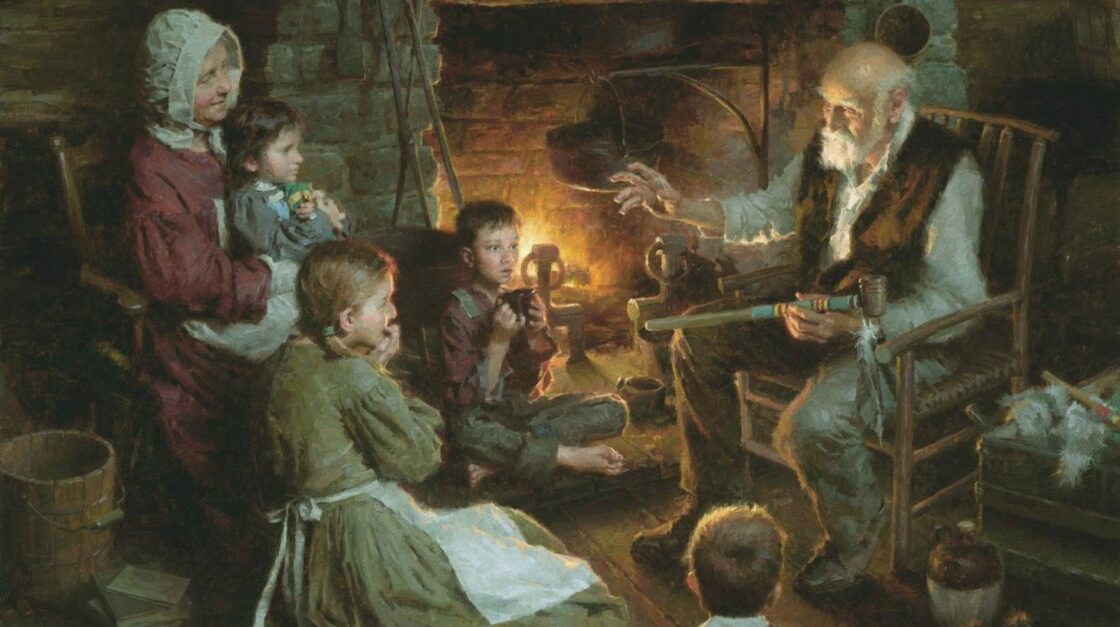
The short story is a fiction writer’s laboratory: here is where you can experiment with characters, plots, and ideas without the heavy lifting of writing a novel. Learning how to write a short story is essential to mastering the art of storytelling . With far fewer words to worry about, storytellers can make many more mistakes—and strokes of genius!—through experimentation and the fun of fiction writing.
Nonetheless, the art of writing short stories is not easy to master. How do you tell a complete story in so few words? What does a story need to have in order to be successful? Whether you’re struggling with how to write a short story outline, or how to fully develop a character in so few words, this guide is your starting point.
Famous authors like Virginia Woolf, Haruki Murakami, and Agatha Christie have used the short story form to play with ideas before turning those stories into novels. Whether you want to master the elements of fiction, experiment with novel ideas, or simply have fun with storytelling, here’s everything you need on how to write a short story step by step.
The Core Elements of a Short Story
There’s no secret formula to writing a short story. However, a good short story will have most or all of the following elements:
- A protagonist with a certain desire or need. It is essential for the protagonist to want something they don’t have, otherwise they will not drive the story forward.
- A clear dilemma. We don’t need much backstory to see how the dilemma started; we’re primarily concerned with how the protagonist resolves it.
- A decision. What does the protagonist do to resolve their dilemma?
- A climax. In Freytag’s Pyramid , the climax of a story is when the tension reaches its peak, and the reader discovers the outcome of the protagonist’s decision(s).
- An outcome. How does the climax change the protagonist? Are they a different person? Do they have a different philosophy or outlook on life?
Of course, short stories also utilize the elements of fiction , such as a setting , plot , and point of view . It helps to study these elements and to understand their intricacies. But, when it comes to laying down the skeleton of a short story, the above elements are what you need to get started.
Note: a short story rarely, if ever, has subplots. The focus should be entirely on a single, central storyline. Subplots will either pull focus away from the main story, or else push the story into the territory of novellas and novels.
The shorter the story is, the fewer of these elements are essentials. If you’re interested in writing short-short stories, check out our guide on how to write flash fiction .
How to Write a Short Story Outline
Some writers are “pantsers”—they “write by the seat of their pants,” making things up on the go with little more than an idea for a story. Other writers are “plotters,” meaning they decide the story’s structure in advance of writing it.
You don’t need a short story outline to write a good short story. But, if you’d like to give yourself some scaffolding before putting words on the page, this article answers the question of how to write a short story outline:
https://writers.com/how-to-write-a-story-outline
How to Write a Short Story Step by Step
There are many ways to approach the short story craft, but this method is tried-and-tested for writers of all levels. Here’s how to write a short story step by step.
1. Start With an Idea
Often, generating an idea is the hardest part. You want to write, but what will you write about?
What’s more, it’s easy to start coming up with ideas and then dismissing them. You want to tell an authentic, original story, but everything you come up with has already been written, it seems.
Here are a few tips:
- Originality presents itself in your storytelling, not in your ideas. For example, the premise of both Shakespeare’s A Midsummer Night’s Dream and Ostrovsky’s The Snow Maiden are very similar: two men and two women, in intertwining love triangles, sort out their feelings for each other amidst mischievous forest spirits, love potions, and friendship drama. The way each story is written makes them very distinct from one another, to the point where, unless it’s pointed out to you, you might not even notice the similarities.
- An idea is not a final draft. You will find that exploring the possibilities of your story will generate something far different than the idea you started out with. This is a good thing—it means you made the story your own!
- Experiment with genres and tropes. Even if you want to write literary fiction , pay attention to the narrative structures that drive genre stories, and practice your storytelling using those structures. Again, you will naturally make the story your own simply by playing with ideas.
If you’re struggling simply to find ideas, try out this prompt generator , or pull prompts from this Twitter .
2. Outline, OR Conceive Your Characters
If you plan to outline, do so once you’ve generated an idea. You can learn about how to write a short story outline earlier in this article.
If you don’t plan to outline, you should at least start with a character or characters. Certainly, you need a protagonist, but you should also think about any characters that aid or inhibit your protagonist’s journey.
When thinking about character development, ask the following questions:
- What is my character’s background? Where do they come from, how did they get here, where do they want to be?
- What does your character desire the most? This can be both material or conceptual, like “fitting in” or “being loved.”
- What is your character’s fatal flaw? In other words, what limitation prevents the protagonist from achieving their desire? Often, this flaw is a blind spot that directly counters their desire. For example, self hatred stands in the way of a protagonist searching for love.
- How does your character think and speak? Think of examples, both fictional and in the real world, who might resemble your character.
In short stories, there are rarely more characters than a protagonist, an antagonist (if relevant), and a small group of supporting characters. The more characters you include, the longer your story will be. Focus on making only one or two characters complex: it is absolutely okay to have the rest of the cast be flat characters that move the story along.
Learn more about character development here:
https://writers.com/character-development-definition
3. Write Scenes Around Conflict
Once you have an outline or some characters, start building scenes around conflict. Every part of your story, including the opening sentence, should in some way relate to the protagonist’s conflict.
Conflict is the lifeblood of storytelling: without it, the reader doesn’t have a clear reason to keep reading. Loveable characters are not enough, as the story has to give the reader something to root for.
Take, for example, Edgar Allan Poe’s classic short story The Cask of Amontillado . We start at the conflict: the narrator has been slighted by Fortunato, and plans to exact revenge. Every scene in the story builds tension and follows the protagonist as he exacts this revenge.
In your story, start writing scenes around conflict, and make sure each paragraph and piece of dialogue relates, in some way, to your protagonist’s unmet desires.
4. Write Your First Draft
The scenes you build around conflict will eventually be stitched into a complete story. Make sure as the story progresses that each scene heightens the story’s tension, and that this tension remains unbroken until the climax resolves whether or not your protagonist meets their desires.
Don’t stress too hard on writing a perfect story. Rather, take Anne Lamott’s advice, and “write a shitty first draft.” The goal is not to pen a complete story at first draft; rather, it’s to set ideas down on paper. You are simply, as Shannon Hale suggests, “shoveling sand into a box so that later [you] can build castles.”
5. Step Away, Breathe, Revise
Whenever Stephen King finishes a novel, he puts it in a drawer and doesn’t think about it for 6 weeks. With short stories, you probably don’t need to take as long of a break. But, the idea itself is true: when you’ve finished your first draft, set it aside for a while. Let yourself come back to the story with fresh eyes, so that you can confidently revise, revise, revise .
In revision, you want to make sure each word has an essential place in the story, that each scene ramps up tension, and that each character is clearly defined. The culmination of these elements allows a story to explore complex themes and ideas, giving the reader something to think about after the story has ended.
6. Compare Against Our Short Story Checklist
Does your story have everything it needs to succeed? Compare it against this short story checklist, as written by our instructor Rosemary Tantra Bensko.
Below is a collection of practical short story writing tips by Writers.com instructor Rosemary Tantra Bensko . Each paragraph is its own checklist item: a core element of short story writing advice to follow unless you have clear reasons to the contrary. We hope it’s a helpful resource in your own writing.
Update 9/1/2020: We’ve now made a summary of Rosemary’s short story checklist available as a PDF download . Enjoy!
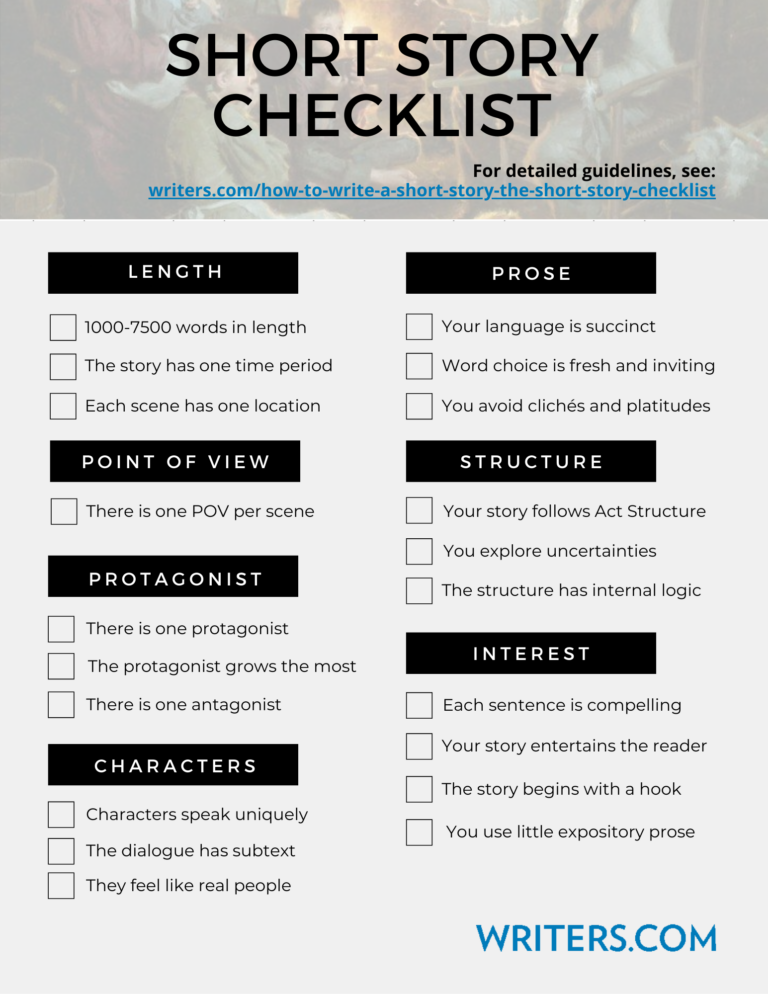
Click to download
How to Write a Short Story: Length and Setting
Your short story is 1000 to 7500 words in length.
The story takes place in one time period, not spread out or with gaps other than to drive someplace, sleep, etc. If there are those gaps, there is a space between the paragraphs, the new paragraph beginning flush left, to indicate a new scene.
Each scene takes place in one location, or in continual transit, such as driving a truck or flying in a plane.
How to Write a Short Story: Point of View
Unless it’s a very lengthy Romance story, in which there may be two Point of View (POV) characters, there is one POV character. If we are told what any character secretly thinks, it will only be the POV character. The degree to which we are privy to the unexpressed thoughts, memories and hopes of the POV character remains consistent throughout the story.
You avoid head-hopping by only having one POV character per scene, even in a Romance. You avoid straying into even brief moments of telling us what other characters think other than the POV character. You use words like “apparently,” “obviously,” or “supposedly” to suggest how non-POV-characters think rather than stating it.
How to Write a Short Story: Protagonist, Antagonist, Motivation
Your short story has one clear protagonist who is usually the character changing most.
Your story has a clear antagonist, who generally makes the protagonist change by thwarting his goals.
(Possible exception to the two short story writing tips above: In some types of Mystery and Action stories, particularly in a series, etc., the protagonist doesn’t necessarily grow personally, but instead his change relates to understanding the antagonist enough to arrest or kill him.)
The protagonist changes with an Arc arising out of how he is stuck in his Flaw at the beginning of the story, which makes the reader bond with him as a human, and feel the pain of his problems he causes himself. (Or if it’s the non-personal growth type plot: he’s presented at the beginning of the story with a high-stakes problem that requires him to prevent or punish a crime.)
The protagonist usually is shown to Want something, because that’s what people normally do, defining their personalities and behavior patterns, pushing them onward from day to day. This may be obvious from the beginning of the story, though it may not become heightened until the Inciting Incident , which happens near the beginning of Act 1. The Want is usually something the reader sort of wants the character to succeed in, while at the same time, knows the Want is not in his authentic best interests. This mixed feeling in the reader creates tension.
The protagonist is usually shown to Need something valid and beneficial, but at first, he doesn’t recognize it, admit it, honor it, integrate it with his Want, or let the Want go so he can achieve the Need instead. Ideally, the Want and Need can be combined in a satisfying way toward the end for the sake of continuity of forward momentum of victoriously achieving the goals set out from the beginning. It’s the encounters with the antagonist that forcibly teach the protagonist to prioritize his Needs correctly and overcome his Flaw so he can defeat the obstacles put in his path.
The protagonist in a personal growth plot needs to change his Flaw/Want but like most people, doesn’t automatically do that when faced with the problem. He tries the easy way, which doesn’t work. Only when the Crisis takes him to a low point does he boldly change enough to become victorious over himself and the external situation. What he learns becomes the Theme.
Each scene shows its main character’s goal at its beginning, which aligns in a significant way with the protagonist’s overall goal for the story. The scene has a “charge,” showing either progress toward the goal or regression away from the goal by the ending. Most scenes end with a negative charge, because a story is about not obtaining one’s goals easily, until the end, in which the scene/s end with a positive charge.
The protagonist’s goal of the story becomes triggered until the Inciting Incident near the beginning, when something happens to shake up his life. This is the only major thing in the story that is allowed to be a random event that occurs to him.
How to Write a Short Story: Characters
Your characters speak differently from one another, and their dialogue suggests subtext, what they are really thinking but not saying: subtle passive-aggressive jibes, their underlying emotions, etc.
Your characters are not illustrative of ideas and beliefs you are pushing for, but come across as real people.
How to Write a Short Story: Prose
Your language is succinct, fresh and exciting, specific, colorful, avoiding clichés and platitudes. Sentence structures vary. In Genre stories, the language is simple, the symbolism is direct, and words are well-known, and sentences are relatively short. In Literary stories, you are freer to use more sophisticated ideas, words, sentence structures and underlying metaphors and implied motifs.
How to Write a Short Story: Story Structure
Your plot elements occur in the proper places according to classical Act Structure so the reader feels he has vicariously gone through a harrowing trial with the protagonist and won, raising his sense of hope and possibility. Literary short stories may be more subtle, with lower stakes, experimenting beyond classical structures like the Hero’s Journey. They can be more like vignettes sometimes, or even slice-of-life, though these types are hard to place in publications.
In Genre stories, all the questions are answered, threads are tied up, problems are solved, though the results of carnage may be spread over the landscape. In Literary short stories, you are free to explore uncertainty, ambiguity, and inchoate, realistic endings that suggest multiple interpretations, and unresolved issues.
Some Literary stories may be nonrealistic, such as with Surrealism, Absurdism, New Wave Fabulism, Weird and Magical Realism . If this is what you write, they still need their own internal logic and they should not be bewildering as to the what the reader is meant to experience, whether it’s a nuanced, unnameable mood or a trip into the subconscious.
Literary stories may also go beyond any label other than Experimental. For example, a story could be a list of To Do items on a paper held by a magnet to a refrigerator for the housemate to read. The person writing the list may grow more passive-aggressive and manipulative as the list grows, and we learn about the relationship between the housemates through the implied threats and cajoling.
How to Write a Short Story: Capturing Reader Interest
Your short story is suspenseful, meaning readers hope the protagonist will achieve his best goal, his Need, by the Climax battle against the antagonist.
Your story entertains. This is especially necessary for Genre short stories.
The story captivates readers at the very beginning with a Hook, which can be a puzzling mystery to solve, an amazing character’s or narrator’s Voice, an astounding location, humor, a startling image, or a world the reader wants to become immersed in.
Expository prose (telling, like an essay) takes up very, very little space in your short story, and it does not appear near the beginning. The story is in Narrative format instead, in which one action follows the next. You’ve removed every unnecessary instance of Expository prose and replaced it with showing Narrative. Distancing words like “used to,” “he would often,” “over the years, he,” “each morning, he” indicate that you are reporting on a lengthy time period, summing it up, rather than sticking to Narrative format, in which immediacy makes the story engaging.
You’ve earned the right to include Expository Backstory by making the reader yearn for knowing what happened in the past to solve a mystery. This can’t possibly happen at the beginning, obviously. Expository Backstory does not take place in the first pages of your story.
Your reader cares what happens and there are high stakes (especially important in Genre stories). Your reader worries until the end, when the protagonist survives, succeeds in his quest to help the community, gets the girl, solves or prevents the crime, achieves new scientific developments, takes over rule of his realm, etc.
Every sentence is compelling enough to urge the reader to read the next one—because he really, really wants to—instead of doing something else he could be doing. Your story is not going to be assigned to people to analyze in school like the ones you studied, so you have found a way from the beginning to intrigue strangers to want to spend their time with your words.
Where to Read and Submit Short Stories
Whether you’re looking for inspiration or want to publish your own stories, you’ll find great literary journals for writers of all backgrounds at this article:
https://writers.com/short-story-submissions

Learn How to Write a Short Story at Writers.com
The short story takes an hour to learn and a lifetime to master. Learn how to write a short story with Writers.com. Our upcoming fiction courses will give you the ropes to tell authentic, original short stories that captivate and entrance your readers.
Rosemary – Is there any chance you could add a little something to your checklist? I’d love to know the best places to submit our short stories for publication. Thanks so much.
Hi, Kim Hanson,
Some good places to find publications specific to your story are NewPages, Poets and Writers, Duotrope, and The Submission Grinder.
“ In Genre stories, all the questions are answered, threads are tied up, problems are solved, though the results of carnage may be spread over the landscape.”
Not just no but NO.
See for example the work of MacArthur Fellow Kelly Link.
[…] How to Write a Short Story: The Short Story Checklist […]
Thank you for these directions and tips. It’s very encouraging to someone like me, just NOW taking up writing.
[…] Writers.com. A great intro to writing. https://writers.com/how-to-write-a-short-story […]
Leave a Comment Cancel Reply
Save my name, email, and website in this browser for the next time I comment.
Looking to publish? Meet your dream editor, designer and marketer on Reedsy.
Find the perfect editor for your next book
1 million authors trust the professionals on Reedsy. Come meet them.
Guides • Perfecting your Craft
Last updated on Oct 29, 2023
How to Write a Short Story in 9 Simple Steps
This post is written by UK writer Robert Grossmith. His short stories have been widely anthologized, including in The Time Out Book of London Short Stories , The Best of Best Short Stories , and The Penguin Book of First World War Stories . You can collaborate with him on your own short stories here on Reedsy .
The joy of writing short stories is, in many ways, tied to its limitations. Developing characters, conflict, and a premise within a few pages is a thrilling challenge that many writers relish — even after they've "graduated" to long-form fiction.
In this article, I’ll take you through the process of writing a short story, from idea conception to the final draft.
How to write a short story:
1. Know what a short story is versus a novel
2. pick a simple, central premise, 3. build a small but distinct cast of characters, 4. begin writing close to the end, 5. shut out your internal editor, 6. finish the first draft, 7. edit the short story, 8. share the story with beta readers, 9. submit the short story to publications.
But first, let’s talk about what makes a short story different from a novel.
The simple answer to this question, of course, is that the short story is shorter than the novel, usually coming in at between, say, 1,000-15,000 words. Any shorter and you’re into flash fiction territory. Any longer and you’re approaching novella length .
As far as other features are concerned, it’s easier to define the short story by what it lacks compared to the novel . For example, the short story usually has:
- fewer characters than a novel
- a single point of view, either first person or third person
- a single storyline without subplots
- less in the way of back story or exposition than a novel
If backstory is needed at all, it should come late in the story and be kept to a minimum.
It’s worth remembering too that some of the best short stories consist of a single dramatic episode in the form of a vignette or epiphany.

GET ACCOUNTABILITY
Meet writing coaches on Reedsy
Industry insiders can help you hone your craft, finish your draft, and get published.
A short story can begin life in all sorts of ways.
It may be suggested by a simple but powerful image that imprints itself on the mind. It may derive from the contemplation of a particular character type — someone you know perhaps — that you’re keen to understand and explore. It may arise out of a memorable incident in your own life.

For example:
- Kafka began “The Metamorphosis” with the intuition that a premise in which the protagonist wakes one morning to find he’s been transformed into a giant insect would allow him to explore questions about human relationships and the human condition.
- Herman Melville’s “Bartleby the Scrivener” takes the basic idea of a lowly clerk who decides he will no longer do anything he doesn’t personally wish to do, and turns it into a multi-layered tale capable of a variety of interpretations.
When I look back on some of my own short stories, I find a similar dynamic at work: a simple originating idea slowly expands to become something more nuanced and less formulaic.
So how do you find this “first heartbeat” of your own short story? Here are several ways to do so.
Experiment with writing prompts
Eagle-eyed readers will notice that the story premises mentioned above actually have a great deal in common with writing prompts like the ones put forward each week in Reedsy’s short story competition . Try it out! These prompts are often themed in a way that’s designed to narrow the focus for the writer so that one isn’t confronted with a completely blank canvas.
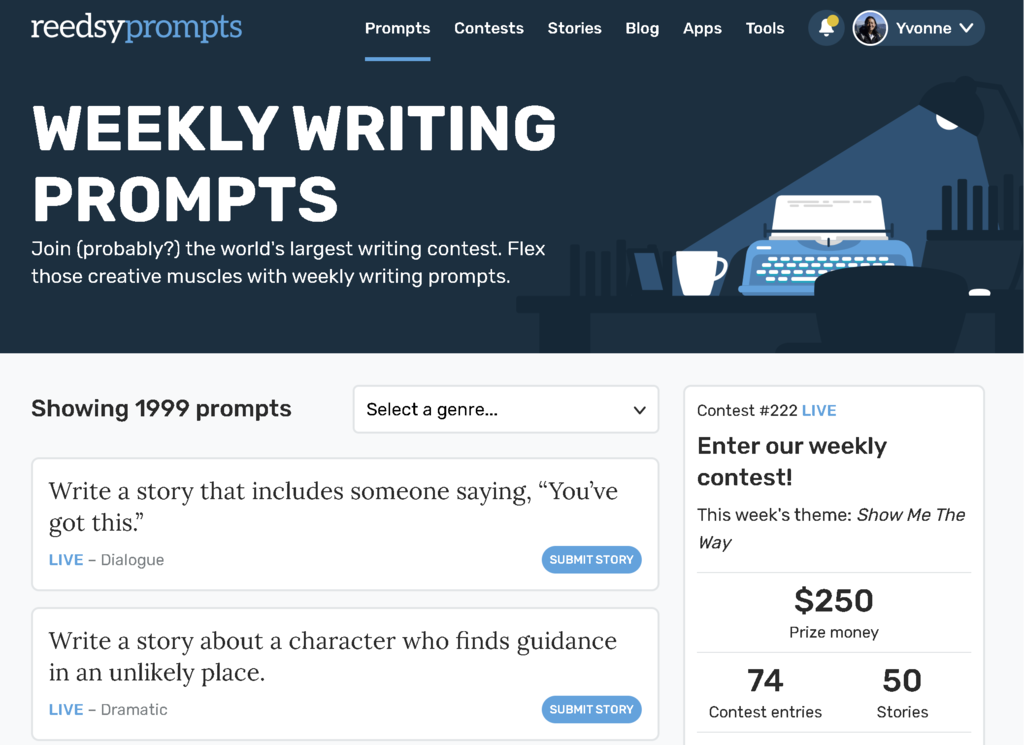
Turn to the originals
Take a story or novel you admire and think about how you might rework it, changing a key element. (“Pride and Prejudice and Vampires” is perhaps an extreme product of this exercise.) It doesn’t matter that your proposed reworking will probably never amount to more than a skimpy mental reimagining — it may well throw up collateral narrative possibilities along the way.
Keep a notebook
Finally, keep a notebook in which to jot down stray observations and story ideas whenever they occur to you. Again, most of what you write will be stuff you never return to, and it may even fail to make sense when you reread it. But lurking among the dross may be that one rough diamond that makes all the rest worthwhile.
Like I mentioned earlier, short stories usually contain far fewer characters than novels. Readers also need to know far less about the characters in a short story than we do in a novel (sometimes it’s the lack of information about a particular character in a story that adds to the mystery surrounding them, making them more compelling).
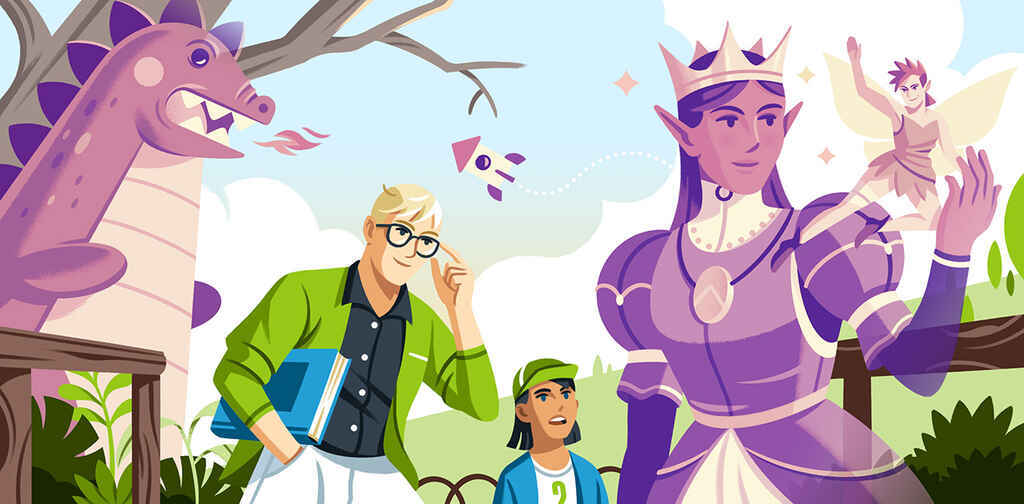
Yet it remains the case that creating memorable characters should be one of your principal goals. Think of your own family, friends and colleagues. Do you ever get them confused with one another? Probably not.
Your dramatis personae should be just as easily distinguishable from one another, either through their appearance, behavior, speech patterns, or some other unique trait. If you find yourself struggling, a character profile template like the one you can download for free below is particularly helpful in this stage of writing.

FREE RESOURCE
Reedsy’s Character Profile Template
A story is only as strong as its characters. Fill this out to develop yours.
- “The Yellow Wallpaper” by Charlotte Perkins Gilman features a cast of two: the narrator and her husband. How does Gilman give her narrator uniquely identifying features?
- “The Tell-Tale Heart” by Edgar Allan Poe features a cast of three: the narrator, the old man, and the police. How does Poe use speech patterns in dialogue and within the text itself to convey important information about the narrator?
- “A Good Man Is Hard to Find” by Flannery O’Connor is perhaps an exception: its cast of characters amounts to a whopping (for a short story) nine. How does she introduce each character? In what way does she make each character, in particular The Misfit, distinct?

He’s right: avoid the preliminary exposition or extended scene-setting. Begin your story by plunging straight into the heart of the action. What most readers want from a story is drama and conflict, and this is often best achieved by beginning in media res . You have no time to waste in a short story. The first sentence of your story is crucial, and needs to grab the reader’s attention to make them want to read on.
One way to do this is to write an opening sentence that makes the reader ask questions. For example, Kingsley Amis once said, tongue-in-cheek, that in the future he would only read novels that began with the words: “A shot rang out.”
This simple sentence is actually quite telling. It introduces the stakes: there’s an immediate element of physical danger, and therefore jeopardy for someone. But it also raises questions that the reader will want answered. Who fired the shot? Who or what were they aiming at, and why? Where is this happening?
We read fiction for the most part to get answers to questions. For example, if you begin your story with a character who behaves in an unexpected way, the reader will want to know why he or she is behaving like this. What motivates their unusual behavior? Do they know that what they’re doing or saying is odd? Do they perhaps have something to hide? Can we trust this character?
As the author, you can answer these questions later (that is, answer them dramatically rather than through exposition). But since we’re speaking of the beginning of a story, at the moment it’s enough simply to deliver an opening sentence that piques the reader’s curiosity, raises questions, and keeps them reading.
“Anything goes” should be your maxim when embarking on your first draft.

FREE COURSE
How to Craft a Killer Short Story
From pacing to character development, master the elements of short fiction.
By that, I mean: kill the editor in your head and give your imagination free rein. Remember, you’re beginning with a blank page. Anything you put down will be an improvement on what’s currently there, which is nothing. And there’s a prescription for any obstacle you might encounter at this stage of writing.
- Worried that you’re overwriting? Don’t worry. It’s easier to cut material in later drafts once you’ve sketched out the whole story.
- Got stuck, but know what happens later? Leave a gap. There’s no necessity to write the story sequentially. You can always come back and fill in the gap once the rest of the story is complete.
- Have a half-developed scene that’s hard for you to get onto the page? Write it in note form for the time being. You might find that it relieves the pressure of having to write in complete sentences from the get-go.
Most of my stories were begun with no idea of their eventual destination, but merely an approximate direction of travel. To put it another way, I’m a ‘pantser’ (flying by the seat of my pants, making it up as I go along) rather than a planner. There is, of course, no right way to write your first draft. What matters is that you have a first draft on your hands at the end of the day.
It’s hard to overstate the importance of the ending of a short story : it can rescue an inferior story or ruin an otherwise superior one.
If you’re a planner, you will already know the broad outlines of the ending. If you’re a pantser like me, you won’t — though you’ll hope that a number of possible endings will have occurred to you in the course of writing and rewriting the story!
In both cases, keep in mind that what you’re after is an ending that’s true to the internal logic of the story without being obvious or predictable. What you want to avoid is an ending that evokes one of two reactions:
- “Is that it?” aka “The author has failed to resolve the questions raised by the story.”
- “WTF!” aka “This ending is simply confusing.”
Like Truman Capote said, “Good writing is rewriting.”
Once you have a first draft, the real work begins. This is when you move things around, tightening the nuts and bolts of the piece to make sure it holds together and resembles the shape it took in your mind when you first conceived it.
In most cases, this means reading through your first draft again (and again). In this stage of editing , think to yourself:
- Which narrative threads are already in place?
- Which may need to be added or developed further?
- Which need to perhaps be eliminated altogether?
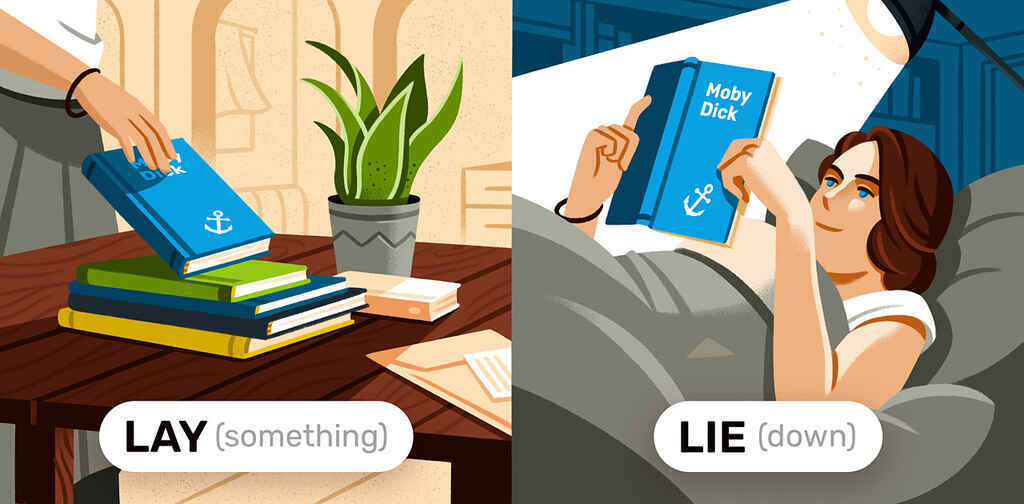
All that’s left afterward is the final polish . Here’s where you interrogate every word, every sentence, to make sure it’s earned its place in the story:
- Is that really what I mean?
- Could I have said that better?
- Have I used that word correctly?
- Is that sentence too long?
- Have I removed any clichés?
Trust me: this can be the most satisfying part of the writing process. The heavy lifting is done, the walls have been painted, the furniture is in place. All you have to do now is hang a few pictures, plump the cushions and put some flowers in a vase.
Eventually, you may reach a point where you’ve reread and rewritten your story so many times that you simply can’t bear to look at it again. If this happens, put the story aside and try to forget about it.
When you do finally return to it, weeks or even months later, you’ll probably be surprised at how the intervening period has allowed you to see the story with a fresh pair of eyes. And whereas it might have felt like removing one of your own internal organs to cut such a sentence or paragraph before, now it feels like a liberation.
The story, you can see, is better as a result. It was only your bloated appendix you removed, not a vital organ.
It’s at this point that you should call on the services of beta readers if you have them. This can be a daunting prospect: what if the response is less enthusiastic than you’re hoping for? But think about it this way: if you’re expecting complete strangers to read and enjoy your story, then you shouldn’t be afraid of trying it out first on a more sympathetic audience.
This is also why I’d suggest delaying this stage of the writing process until you feel sure your story is complete. It’s one thing to ask a friend to read and comment on your new story. It’s quite another thing to return to them sometime later with, “I’ve made some changes to the story — would you mind reading it again?”

So how do you know your story’s really finished? This is a question that people have put to me. My reply tends to be: I know the story’s finished when I can’t see how to make it any better.
This is when you can finally put down your pencil (or keyboard), rest content with your work for a few days, then submit it so that people can read your work. And you can start with this directory of literary magazines once you're at this step.
The truth is, in my experience, there’s actually no such thing as a final draft. Even after you’ve submitted your story somewhere — and even if you’re lucky enough to have it accepted — there will probably be the odd word here or there that you’d like to change.
Don’t worry about this. Large-scale changes are probably out of the question at this stage, but a sympathetic editor should be willing to implement any small changes right up to the time of publication.
Join a community of over 1 million authors
Reedsy is more than just a blog. Become a member today to discover how we can help you publish a beautiful book.
Bring your short stories to life
Fuse character, story, and conflict with tools in the Reedsy Book Editor. 100% free.

1 million authors trust the professionals on Reedsy. Come meet them.
Enter your email or get started with a social account:
How to Write a Short Story: Free Tutorial
Short stories were once the training grounds for the best writers in the world. Writers like Ernest Hemingway, Leo Tolstoy, Mark Twain, and Stephen King learned the craft of writing through short stories before they published their first novels. Even though short stories have gone out of favor, they are still the best way for writers to learn the craft quickly.
In this free tutorial, you will learn why short stories are important for aspiring writers, how to write a short story, and how to submit your short stories to magazines and get them published.

Photo by |vvaldzen|
Ten Steps to Publishing Short Stories
This effective tutorial will be conveniently delivered to your email inbox in ten manageable chunks. You’ll also get links to helpful resources and professional services. Here are the topics we’ll cover:
- Five Steps to Write Short Stories
- Four Reasons to Write Short Stories
- Three Tips to Write a Great Short Story
- The Best Way to Become a Better Writer
- Three Ways Short Stories Are Different Than Novels
- Should You Focus on a Mood or an Event?
- How to Write a Short Story Only You Could Write
- How to Format a Short Story Manuscript for Submission: a Checklist
- 4 Tips to Avoid Having Your Short Story Rejected by a Literary Magazine
- You Will be Rejected
- BONUS : How to Get Published in a Literary Magazine [Interview with Glimmer Train Stories]
- BONUS : How to Publish 99 Short Stories in 8 Years [An Interview with Stefanie Freele]
How to Write a Short Story
Everyone needs a little kick in the pants every once in a while. If you want to write but have been struggling with the discipline to do it, this tutorial will help by providing practical challenges given with a dose of inspiration.
Get Published
Thousands of literary magazines exist today to publish up and coming writers like you. This tutorial will help you discover those magazines and submit your short stories the right way so you can get published sooner.
Begin a Career In Writing
Short stories are a good way to start your career in fiction. We'll show you how short stories have been used by other writers to build their writing careers, and how you can do it, too. Join thousands of other writers who trust The Write Practice to help them improve at the writing craft through deliberate practice.
Yes, I Want In »
Join over 450,000 readers who are saying YES to practice. You’ll also get a free copy of our eBook 14 Prompts :
Popular Resources
Book Writing Tips & Guides Creativity & Inspiration Tips Writing Prompts Grammar & Vocab Resources Best Book Writing Software ProWritingAid Review Writing Teacher Resources Publisher Rocket Review Scrivener Review Gifts for Writers
Books By Our Writers

You've got it! Just us where to send your guide.
Enter your email to get our free 10-step guide to becoming a writer.
You've got it! Just us where to send your book.
Enter your first name and email to get our free book, 14 Prompts.
Want to Get Published?
Enter your email to get our free interactive checklist to writing and publishing a book.

IMAGES
VIDEO
COMMENTS
Step 4: List your ideas at the end of your document and start writing. Transfer your best ideas, plot points, pieces of dialogue or other phrases to the bottom of your document. Now it’s time to write. At this point, you probably have an image in your mind as to how you want to start off your story. Go from there.
In your story, start writing scenes around conflict, and make sure each paragraph and piece of dialogue relates, in some way, to your protagonist’s unmet desires. 4. Write Your First Draft. The scenes you build around conflict will eventually be stitched into a complete story.
Know what a short story is versus a novel. 2. Pick a simple, central premise. 3. Build a small but distinct cast of characters. 4. Begin writing close to the end. 5. Shut out your internal editor.
You get a sort of theme in what you want the story to communicate. You write bits and pieces but the biggest challenge is making all fit together. Particularly you want a series of actions and you want the reader to think of the theme naturally occurring out of accumulated flow of the story. Larry B.
1 – You learn the skill of showing. Short story writers have a challenge that requires some patience to overcome, but it’s worth it. When you only have a few pages to hook readers, paint a clear picture of the main character, and tell a story, you end up mastering the skill of showing instead of telling.
When drafting a short story, one of the first steps is coming up with a core idea or premise to build the narrative around. Here are some effective techniques for generating initial story concepts: Brainstorming Prompts – Use writing prompts, either from online lists or ones you generate yourself, as a springboard.
Begin a Career In Writing. Short stories are a good way to start your career in fiction. We'll show you how short stories have been used by other writers to build their writing careers, and how you can do it, too. Join thousands of other writers who trust The Write Practice to help them improve at the writing craft through deliberate practice.
So without further ado, here are the steps to writing a short story: Step 1. Get to know your character. Although a short story does not trace a character’s journey in depth the way a novel does, it’s still important to get to know your character. Characters drive stories, whether they are full-length novels or short stories.
Step 4: List Your Ideas at the End of Your Document and Start Writing. Transfer your best ideas, plot points, pieces of dialogue or other phrases to the bottom of your document. Now it’s time to write. At this point, you probably have an image in your mind as to how you want to start off your story. Go from there.
To start you off on this journey, we have broken down the process into 10 steps, with plenty of ideas to help you find your footing. Generate Your Short Story Idea. Create Compelling Characters. Outline Your Short Story. Craft a Strong Opening. Build Your Story. Write an Unforgettable Ending. Edit, Refine, and Polish.